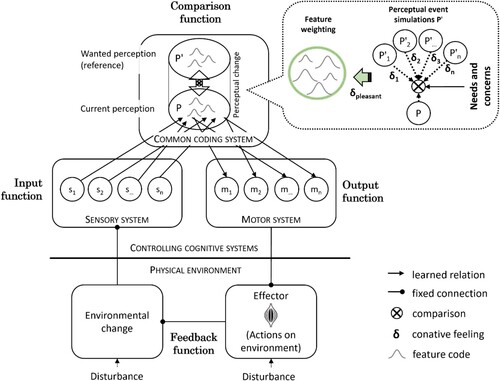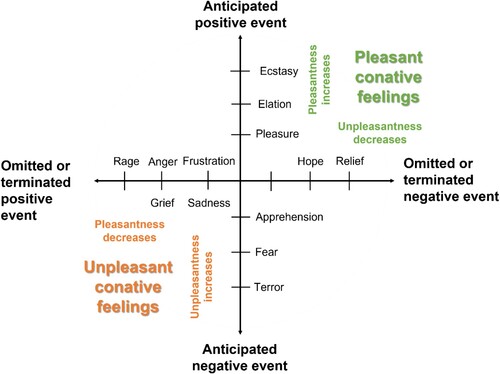Figures & data
Figure 1. Outline of a perceptual control system that uses actions on the physical environment to reduce the discrepancy between registered (p) and a wanted (p’) perceptual signals. Emotional feelings about perceptual changes code for the wanting of a simulated change, increasing the activation level of wanted perceptual codes and that of associated motor structures via ideomotor processes. s1 … sn = low-level sensory codes; m1 … mn = low-level motor codes; P = current perceptual state; P′1 … P′n = simulated perceptual states or events.

Figure 2. Some emotions associated with predictive processes about positive and negative events or their termination and omission. A pleasant conative feeling is generated by the anticipation of an improved state and an unpleasant conative feeling by the expectation of a declined state with respect to the individual’s current needs and concerns. Intensity of the conative feeling depends on the magnitude of the feeling change and on the estimated probability of the event (i.e. large changes and likely events generate more intense feelings). Figure modified after Rolls (Citation2005, p. 14).

